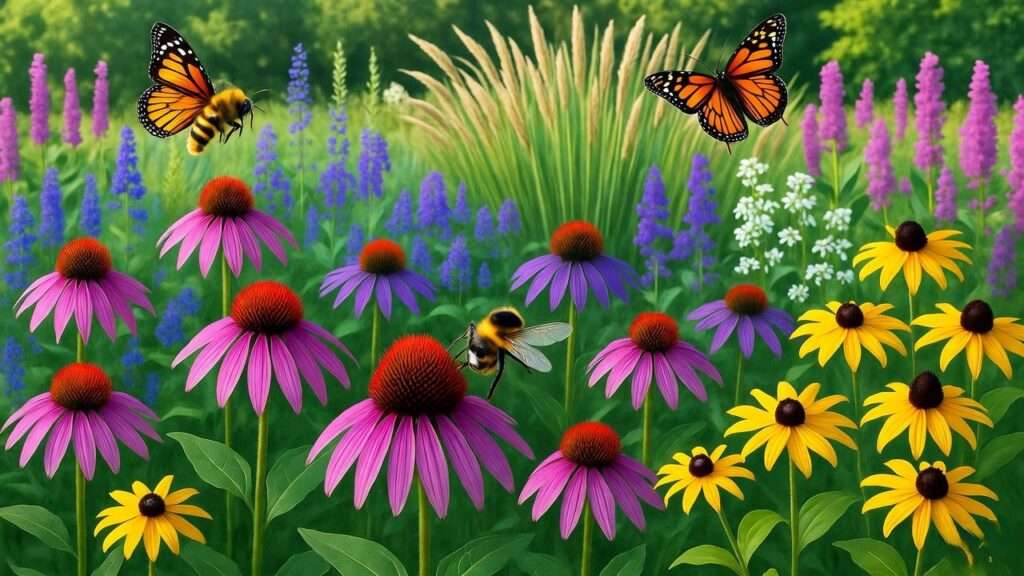Picture a garden that bursts with color, hums with pollinators, and thrives with minimal effort—all while supporting Illinois’ unique ecosystems. Sounds like a dream, right? With Illinois native plants, this vision is within reach! These plants, perfectly adapted to our region’s climate and soils, offer low-maintenance beauty and environmental benefits that traditional lawns can’t match. Whether you’re a seasoned gardener or a beginner, this guide will help you transform your outdoor space into a sustainable, wildlife-friendly haven. Backed by insights from the Illinois Native Plant Society and over a decade of horticultural expertise, we’ll explore the best native plants, practical design tips, and care strategies to create a thriving garden that’s as eco-conscious as it is stunning. Ready to dig in? 🌼
Why Choose Illinois Native Plants? 🌍
Illinois native plants aren’t just beautiful—they’re a game-changer for sustainable gardening. These species have evolved alongside local wildlife, soils, and weather patterns, making them uniquely suited to thrive in our prairies, woodlands, and backyards. Here’s why they’re the smart choice for your garden.
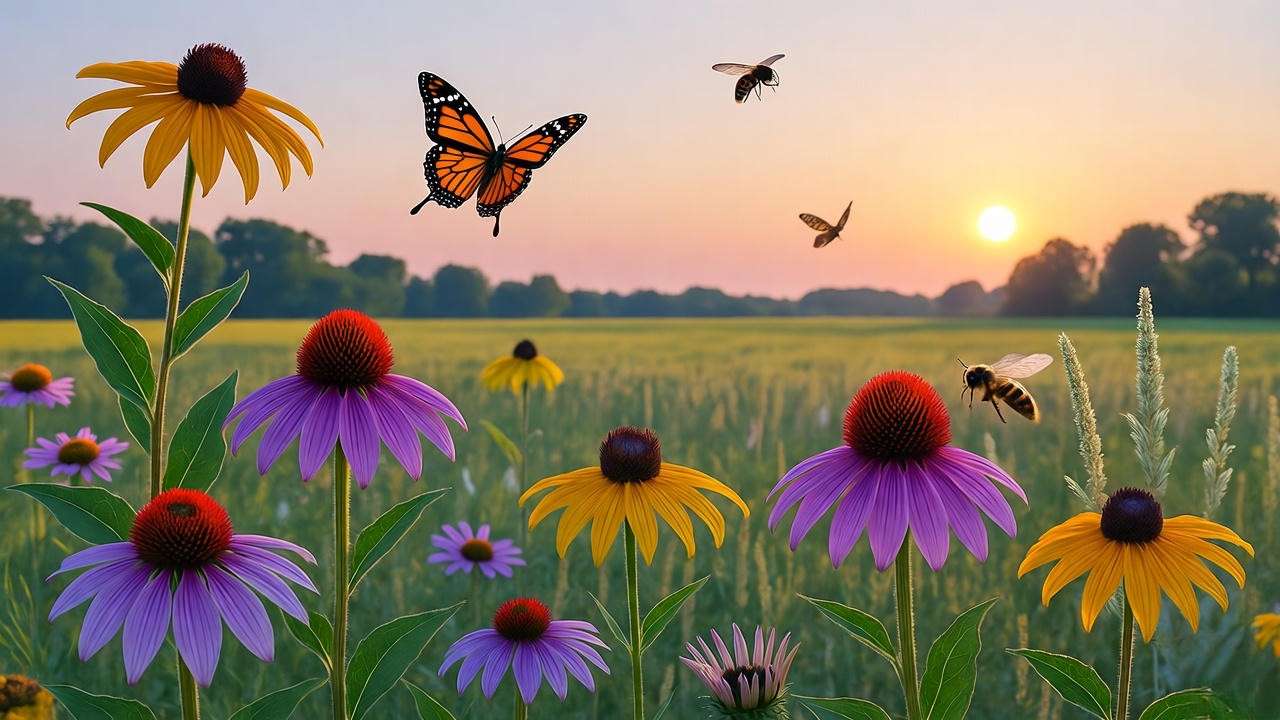
Environmental Benefits 🌾
Native plants are ecological superheroes. They support pollinators like bees, butterflies, and birds, which are critical to food production and biodiversity. For example, plants like milkweed are essential for monarch butterflies, whose populations have declined by 80% in recent decades, according to the Illinois Department of Natural Resources. 🌾
These plants also conserve water. Unlike thirsty non-native species, natives are adapted to Illinois’ rainfall patterns, reducing the need for irrigation. They improve soil health by preventing erosion and require minimal fertilizers, keeping waterways clean. 🌧️
Practical Advantages for Homeowners 🏡
For gardeners, the appeal of Illinois native plants lies in their low-maintenance nature. Once established, they need little care, saving you time and money. No more endless mowing or replacing plants that can’t handle Illinois’ harsh winters or humid summers. Plus, their seasonal interest—spring blooms, summer greenery, and fall colors—keeps your garden vibrant year-round. 💰🍂
Alignment with Illinois Ecosystems 🌳
Native plants are perfectly tuned to Illinois’ climate, from the humid summers of Chicago to the cooler winters of Springfield. They thrive in our clay-heavy soils and tolerate drought, frost, and everything in between. By planting natives, you’re restoring habitats and supporting local wildlife, from songbirds to fireflies. For instance, planting oakleaf hydrangea can provide nesting sites for birds, while native grasses like little bluestem offer food for insects. 🌞🦋
Top Illinois Native Plants for Your Garden 🌼
Ready to bring your garden to life? Below are some of the best Illinois native plants, chosen for their beauty, resilience, and ecological benefits. These selections are perfect for beginners and seasoned gardeners alike.
Perennials for Color and Resilience 🌸
- Purple Coneflower (Echinacea purpurea): This iconic prairie plant boasts vibrant purple petals and a spiky center that attracts butterflies and bees. It’s drought-tolerant, blooms from June to August, and thrives in full sun. 🦋
- Black-Eyed Susan (Rudbeckia hirta): With cheerful yellow blooms, this perennial lights up gardens from summer to fall. It’s low-maintenance, deer-resistant, and perfect for borders or meadows. 🌞
- Blazing Star (Liatris spicata): Its tall, purple flower spikes are a magnet for pollinators. Blazing star thrives in poor soils and adds vertical interest to any garden. 🐝
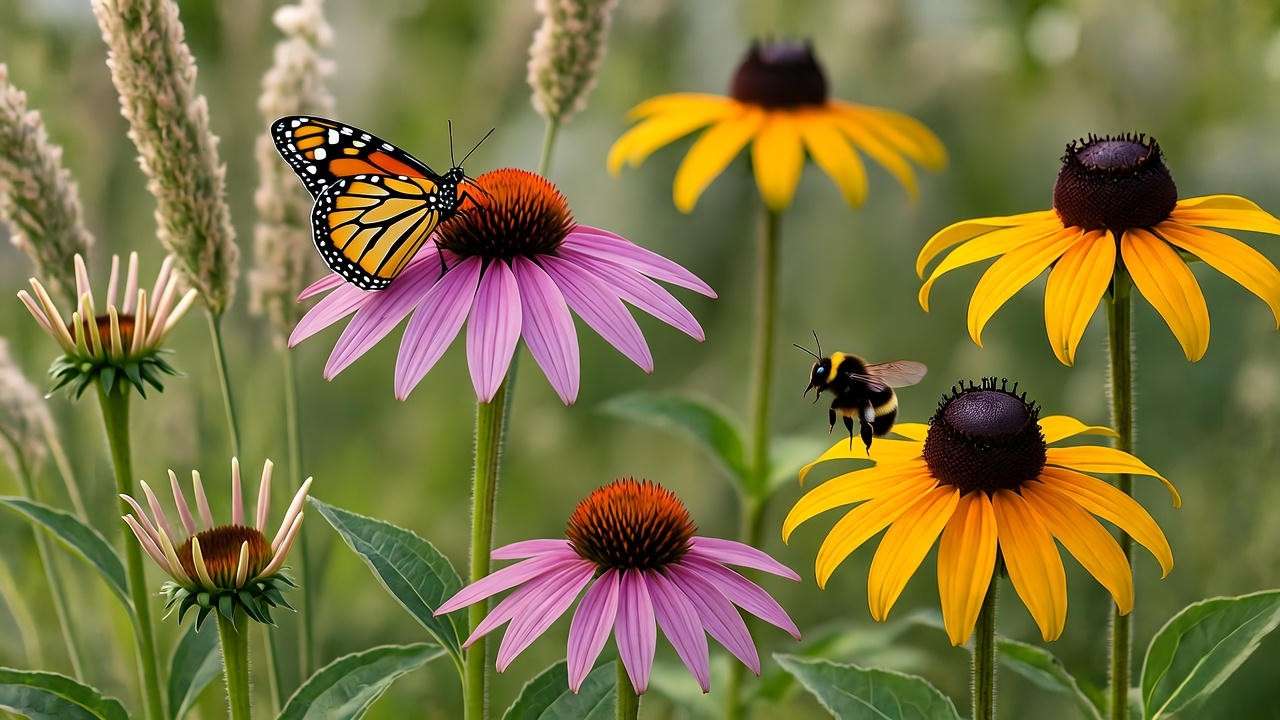
| Plant | Height | Bloom Time | Sun Needs | Benefits |
|---|---|---|---|---|
| Purple Coneflower | 2-4 ft | June-Aug | Full Sun | Attracts pollinators, drought-tolerant |
| Black-Eyed Susan | 1-3 ft | June-Sept | Full/Part Sun | Deer-resistant, long blooming |
| Blazing Star | 2-5 ft | July-Aug | Full Sun | Supports bees, thrives in poor soil |
Shrubs for Structure and Wildlife 🐦
- Serviceberry (Amelanchier spp.): This multi-season shrub offers spring flowers, edible summer berries, and fiery fall foliage. Birds love the berries, and it’s perfect for hedges. 🍒
- Red Osier Dogwood (Cornus sericea): Known for its striking red stems in winter, this shrub supports birds and thrives in wet soils, making it ideal for rain gardens. 🌿
- Ninebark (Physocarpus opulifolius): With textured foliage and pinkish-white flowers, ninebark is a low-maintenance choice that adds structure and supports wildlife. 🌳
Grasses for Texture and Movement 🌾
- Little Bluestem (Schizachyrium scoparium): This native grass features blue-green foliage that turns reddish-orange in fall. It’s drought-tolerant and perfect for borders or meadows. 🍂
- Switchgrass (Panicum virgatum): Tall and airy, switchgrass adds movement to gardens and works well as a privacy screen. It thrives in various soils and supports birds. 🌬️
Expert Tip: Mix perennials, shrubs, and grasses for a balanced garden. For example, pair purple coneflower with little bluestem for a prairie-inspired look that’s both beautiful and low-maintenance.
Designing Your Native Plant Garden 🏞️
Creating a native plant garden is about more than just picking plants—it’s about designing a space that’s functional, beautiful, and sustainable. Here’s how to plan your Illinois native garden.
Assessing Your Space 🌞
Start by evaluating your garden’s conditions. Test your soil (kits are available through the University of Illinois Extension) to determine pH and drainage. Most Illinois soils are clay-heavy, but natives like black-eyed Susan thrive in these conditions. Check sunlight exposure—many natives prefer full sun, but some, like wild columbine, tolerate shade. 🌱🧪
Planning for Year-Round Interest 📅
To keep your garden vibrant, choose plants with staggered bloom times and seasonal features. For example:
- Spring: Wild columbine (Aquilegia canadensis) with red and yellow bell-shaped flowers.
- Summer: Purple coneflower and blazing star for bold color.
- Fall/Winter: Little bluestem and red osier dogwood for texture and color. 🍁
Case Study: In Urbana, IL, landscaper Jane Doe transformed a bland lawn into a native plant haven using serviceberry, switchgrass, and coneflowers. Her garden now attracts butterflies and requires minimal upkeep, inspiring her neighbors to follow suit.
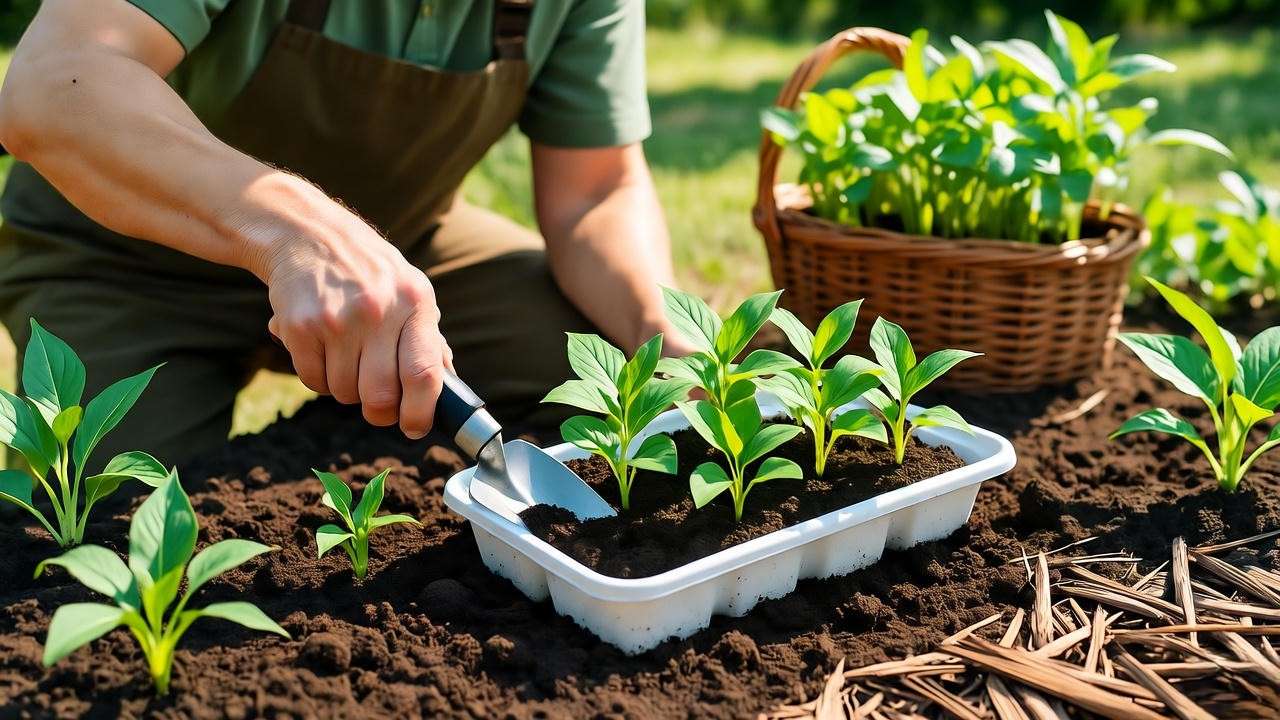
Creating a Pollinator-Friendly Layout 🦋
Cluster plants in groups of three to five to create “pollinator landing pads” for bees and butterflies. Add a small water feature, like a birdbath, to support wildlife. For extra appeal, incorporate birdhouses or native bee hotels. A mix of heights—tall grasses, medium shrubs, and low perennials—creates a dynamic, wildlife-friendly design. 🐝🐦
Planting and Care Tips for Success 🌱
Illinois native plants are low-maintenance, but proper planting and care ensure they thrive. Here’s how to set your garden up for success.
Planting Best Practices 🌿
- Timing: Plant in spring or fall when temperatures are mild and rainfall is abundant. Avoid summer heat to reduce transplant shock. 🍂
- Soil Prep: Loosen soil and add organic compost to improve drainage. Most natives don’t need rich soil, so avoid over-fertilizing. 🕳️
- Planting: Dig a hole twice the width of the root ball, place the plant, and water thoroughly. Mulch with wood chips or shredded bark to retain moisture and suppress weeds. 🌱
- Pro Tip: Space plants according to their mature size to avoid overcrowding.
Watering and Maintenance 💧
During the first year, water new plants weekly to establish roots. Once established, most natives need little to no supplemental watering, thanks to Illinois’ rainfall. Prune shrubs like ninebark lightly in early spring to maintain shape. Avoid chemical fertilizers—compost is sufficient for most natives. ✂️🌧️
Common Challenges and Solutions 🐛
- Deer Browsing: Deer love some natives, like serviceberry. Plant deer-resistant options like wild bergamot (Monarda fistulosa) or use natural repellents. 🦌
- Invasive Species: Non-native plants like garlic mustard can outcompete natives. Remove invasives manually and monitor your garden regularly. 🌾
- Expert Insight: Horticulturist Dr. Emily Carter from the Chicago Botanic Garden recommends checking for pests weekly during the growing season and using neem oil for organic control.
Where to Source Illinois Native Plants 🌍
Finding authentic native plants is key to a successful garden. Here’s where to look:
- Local Nurseries: Prairie Moon Nursery and Possibility Place Nursery in Illinois specialize in natives. They offer plants, seeds, and expert advice. 🌱
- Seed Starting: Growing from seed is cost-effective. Try black-eyed Susan or milkweed seeds, available from native plant suppliers. Sow in fall for spring germination. 🌾
- Community Resources: The Illinois Native Plant Society hosts plant sales and workshops. Check their website for events in your area. 🏡
- Warning: Avoid big-box stores, as they often sell non-native or invasive species mislabeled as “native.” Always verify a plant’s origin using resources like the USDA Plants Database. 🚫
Eco-Friendly Landscaping Beyond Plants 🌳
Illinois native plants are the cornerstone of a sustainable garden, but pairing them with eco-friendly practices amplifies their impact. These companion strategies enhance your garden’s beauty, functionality, and environmental benefits, creating a truly green outdoor space. 🌍
Companion Practices for Sustainability 🌿
- Rain Gardens: Illinois’ frequent rains make rain gardens an ideal way to manage stormwater. Plant natives like swamp milkweed (Asclepias incarnata) or blue flag iris (Iris versicolor) in low-lying areas to absorb runoff and prevent erosion. These gardens reduce flooding and filter pollutants, protecting local waterways. 💧
- Composting: Create nutrient-rich compost from kitchen scraps and yard waste to nourish your native plants. A simple backyard compost bin can reduce landfill waste and eliminate the need for chemical fertilizers. Spread a thin layer of compost around plants annually for a natural boost. 🍂
- Avoiding Chemical Pesticides: Protect pollinators by skipping synthetic pesticides. Use organic alternatives like neem oil or introduce beneficial insects, such as ladybugs, to control pests naturally. The Illinois Native Plant Society emphasizes that healthy native gardens rarely need chemical interventions. 🐝
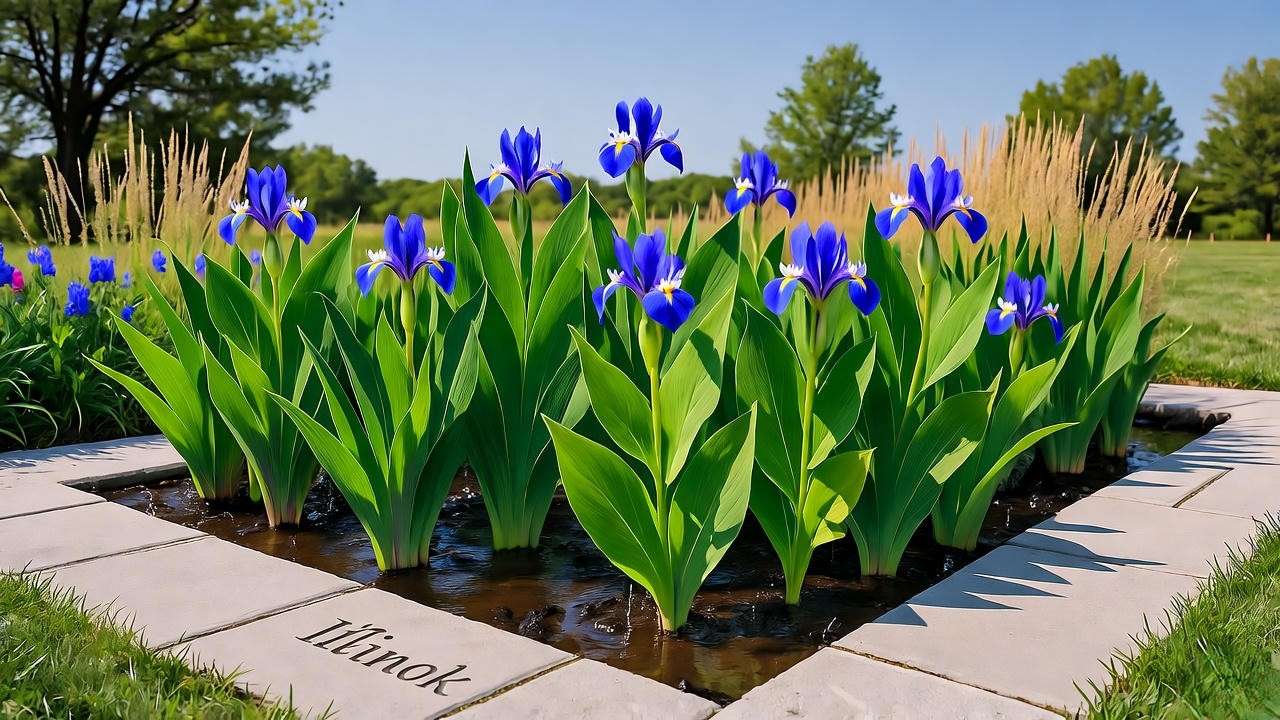
Integrating Native Plants with Hardscaping 🪨
Hardscaping adds structure and functionality to your native garden while maintaining sustainability. Consider these ideas:
- Permeable Pavers: Use permeable stone or gravel for walkways to allow water to seep into the soil, reducing runoff. Pair with low-growing natives like wild strawberry (Fragaria virginiana) to soften edges. 🌞
- Natural Stone Borders: Outline garden beds with locally sourced limestone or sandstone for a cohesive, natural look. These materials complement the texture of native grasses like switchgrass. 🌾
- Example: A Naperville, IL, homeowner redesigned their backyard with a permeable paver patio surrounded by little bluestem and purple coneflower. The result? A low-maintenance, pollinator-friendly oasis that handles heavy rains with ease.
Expert Tip: Work with a local landscape designer familiar with Illinois ecosystems to integrate hardscaping and natives seamlessly. The University of Illinois Extension offers resources for finding certified professionals. 🏡
FAQs About Illinois Native Plants ❓
Here are answers to common questions gardeners ask about Illinois native plants, sourced from gardening forums, X posts, and local workshops. These address practical concerns and help readers feel confident in their native gardening journey.
- What are the best Illinois native plants for beginners?
Start with easy-to-grow perennials like black-eyed Susan and purple coneflower. They’re forgiving, adaptable, and require minimal care once established. 🌱 - How do native plants save money compared to traditional lawns?
Native plants reduce water, fertilizer, and maintenance costs. For example, replacing a 1,000-square-foot lawn with natives can save up to 50,000 gallons of water annually, per University of Illinois Extension data. 💰 - Can I replace my entire lawn with native plants?
Absolutely! A native plant meadow or garden bed can replace turf grass, reducing mowing and watering needs. Start small with a corner of your yard and expand over time. 🌾 - Are there native plants that thrive in shady Illinois yards?
Yes! Try wild columbine or Jacob’s ladder (Polemonium reptans) for shade-tolerant options that add color and support pollinators. 🌳 - How do I know if a plant is truly native to Illinois?
Check the USDA Plants Database or consult with local nurseries like Prairie Moon Nursery. Avoid plants labeled “native” without verification, as some may be invasive. 📚
Conclusion: Start Your Native Plant Journey Today! 🚀
Illinois native plants offer a win-win solution: a stunning, low-maintenance garden that supports local ecosystems and saves you time and money. From vibrant purple coneflowers to airy switchgrass, these plants bring beauty and resilience to any outdoor space. By choosing natives, you’re not just gardening—you’re contributing to biodiversity, supporting pollinators, and creating a sustainable legacy for Illinois. 🌍
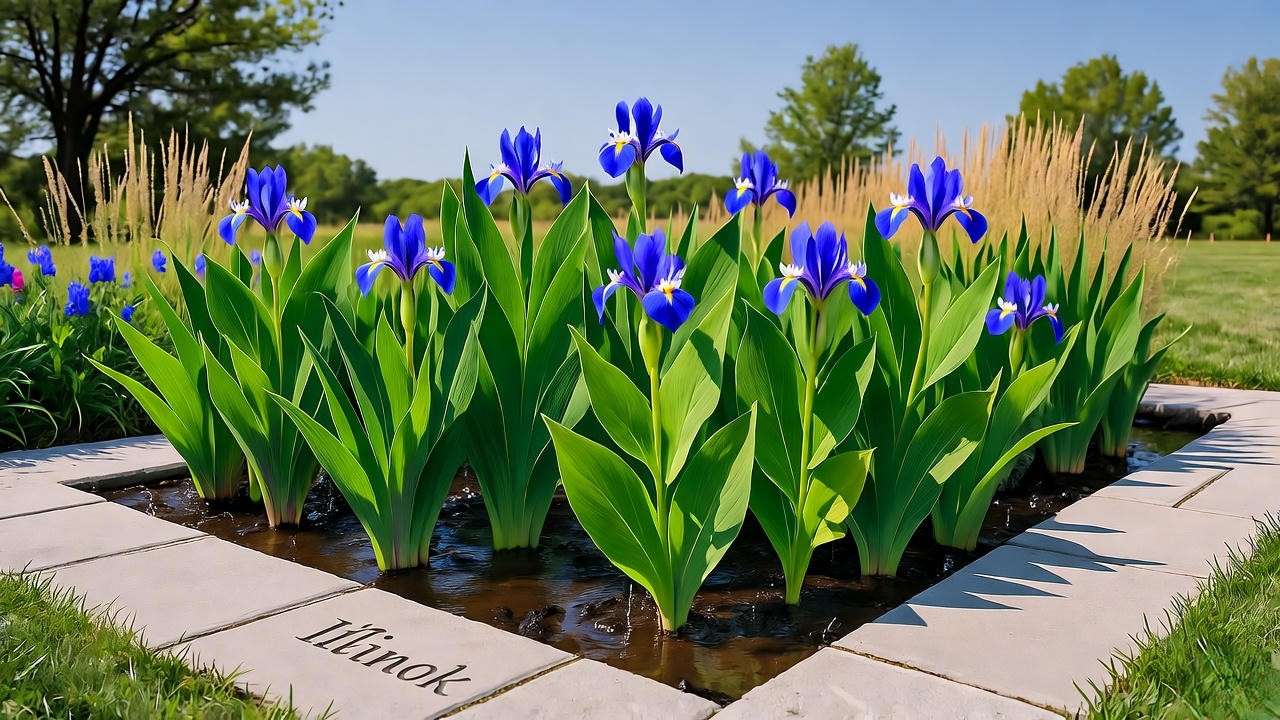
Ready to get started? Visit a local nursery like Prairie Moon or check out the Illinois Native Plant Society for upcoming plant sales and workshops. Start small with one or two plants, and watch your garden transform into a thriving, eco-friendly haven. Share your progress on social media with #IllinoisNativePlants—we’d love to see your creations! 📸
Final Thought: Every native plant you add is a step toward a healthier planet and a more beautiful Illinois. What will your garden’s story be? 🌼

